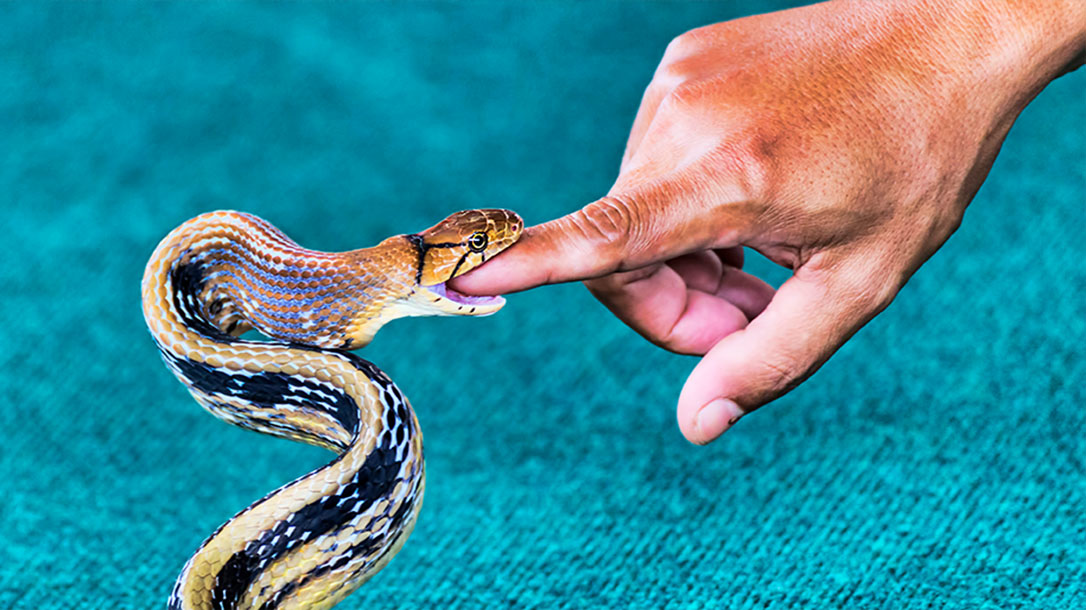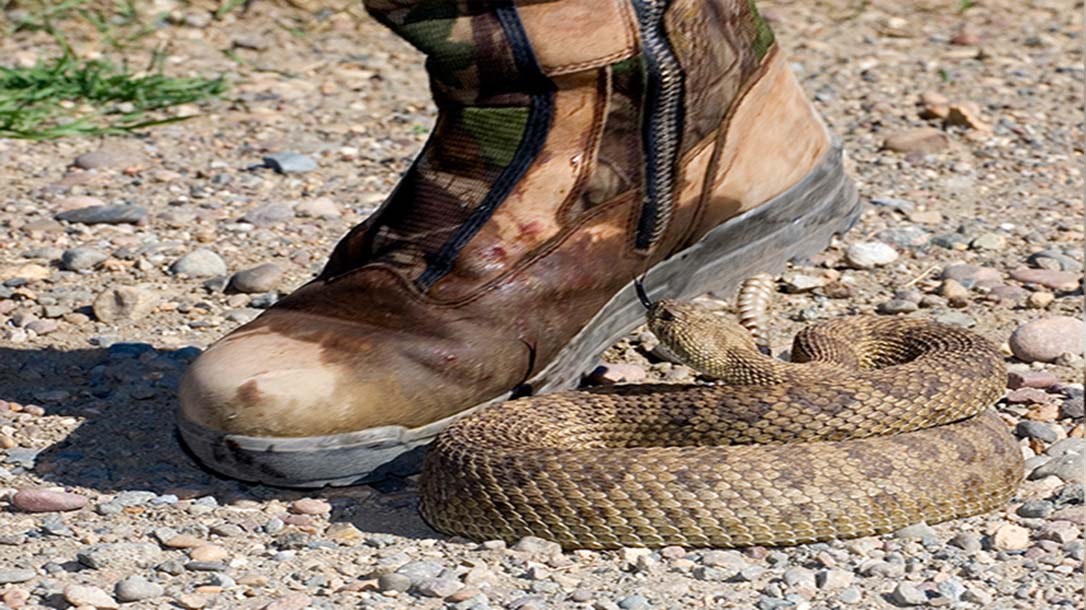Ophidiophobia or more commonly the fear of snakes is one of the most panic inducing phobias there is. Even the mention of a snake to some can cause a visceral reaction. Whether you love them or hate them, they slither through our daily lives. To some they are simply part of our harmonious coexistence on Earth. To others they are pure evil and should be killed with fire and any other improvised weapon.
Handling A Snakebite Properly
Snakes have had an interesting history with the human race. While the minority are venomous in nature, these creatures have had a major impact on us and how we see these species in general. For those neutral or “Pro-Snake” the reality is that the venomous members of this species can be very dangerous. With names like “dread” and “dead man walking,” these creatures have earned their reputation. The title of deadliest snake goes to the Saw-Scaled Viper.
Scientists believe it to be responsible for more human deaths than all other snake species combined. Its venom, however, is lethal in less than 10 percent of untreated victims, but the snake’s aggressiveness means it bites early and often. I believe for most people terrified of snakes; this is the nightmare snake. The most venomous of these slithering reptiles is the Inland Taipan. Mortality rate with this snake is north of 80%. Fortunately, these snakes rarely bite because of their reclusive nature. This brings up the question however, just how do I survive a snakebite? While treatment myths run rampant, there are some proven things you can do to survive or help a friend to survive a snakebite.

Statistically Speaking, You’ll Be Alright
According to the Centers for Disease Control, 7000 to 8000 people each year are bitten by snakes. Of those only 1 in 500 will actually die from the bite. As a general statistic, deaths by snakebite rarely exceed 10 in any given year. Individual reactions to snakebites vary as some people can have an almost allergic reaction while others suffer simple pain. There are only four groups of venomous snakes found in the continental United States: copperheads, cottonmouths, rattlesnakes, and coral snakes.
Rattlesnakes are the most common venomous snake with 31 different species spread across the US. With the exception of Alaska, venomous snakes are found across the US. Leading the pack is Arizona with 19 different types of venomous snakes. Most snakebites come at the end of less than solid decisions. Teasing or getting close to any snake is never a wise move. Left to themselves, snakes generally avoid people and prefer solitude. Occasionally our worlds will collide however, and bites occur.
Proper Snakebite Treatment And Care
Treatments for snakebites can be the stuff of legend. From cutting an “X” on the bites and sucking out the venom to tourniquets, the suggestions sometime border on questionable. Let’s break it down to more realistic methods.
What TO DO if you or someone else is bitten by a snake:
- If you or someone you know are bitten, try to see and remember the color and shape of the snake, which can help with treatment of the snakebite. There are different types of antivenom and knowing the snake can speed treatment.
- Keep the bitten person still and calm. This can slow down the spread of venom if the snake is poisonous. This may be a challenge, but the way you carry yourself will influence them. In short, it is best to not scream, “You gonna’ die!”
- Remove any jewelry from the area that is bitten. It will begin to swell, and rings can be dangerous.
- Seek medical attention as soon as possible.
- Dial 911 or call local Emergency Medical Services (EMS).
- Apply first aid if you cannot get the person to the hospital right away.
- Lay or sit the person down with the bite below the level of the heart.
- Tell him/her to stay calm and still.
- Cover the bite with a clean, dry dressing.

What NOT TO DO if you or someone else is bitten by a snake:
- Do not pick up the snake or try to trap it. More than likely this is what led to the initial bite. It is best to avoid the multiple victim scenario.
- Do not apply a tourniquet. Restricting superficial bloodflow does keep the venom from spreading, however this causes its own danger. Venom that stays concentrated near the bite will rapidly destroy cells; allowing it to spread will dilute the toxin and likely reduce tissue damage
- Do not cut the wound with a knife. The venom is already in the blood stream, and you will simply cause tissue trauma and risk infecting the wound.
- Do not suck out the venom. If you do manage to actually remove venom from the bite, you will now have snake venom in your mouth. Good luck with that.
- Do not apply ice or immerse the wound in water.
- Do not drink alcohol as a pain killer. I know it was a thing in an old cowboy western, but it will cause quicker absorption of the venom. Save the shots for the celebration following rescue.
- Do not drink caffeinated beverages. Caffeine works the same way as alcohol so know this this is not the time for a mocha latte goo goo vendi whatever.
Above all things keep a cool head and get help. Be smart about where you walk and watch for snakes. Your chances of survival are very high if you act quickly. I speak from experience as I was bitten by a copperhead nearly four decades ago and had no real issues at all. My father was also bitten by a rattlesnake when he was young. After fours days of pain and suffering, the snake finally died. Stay safe.
































